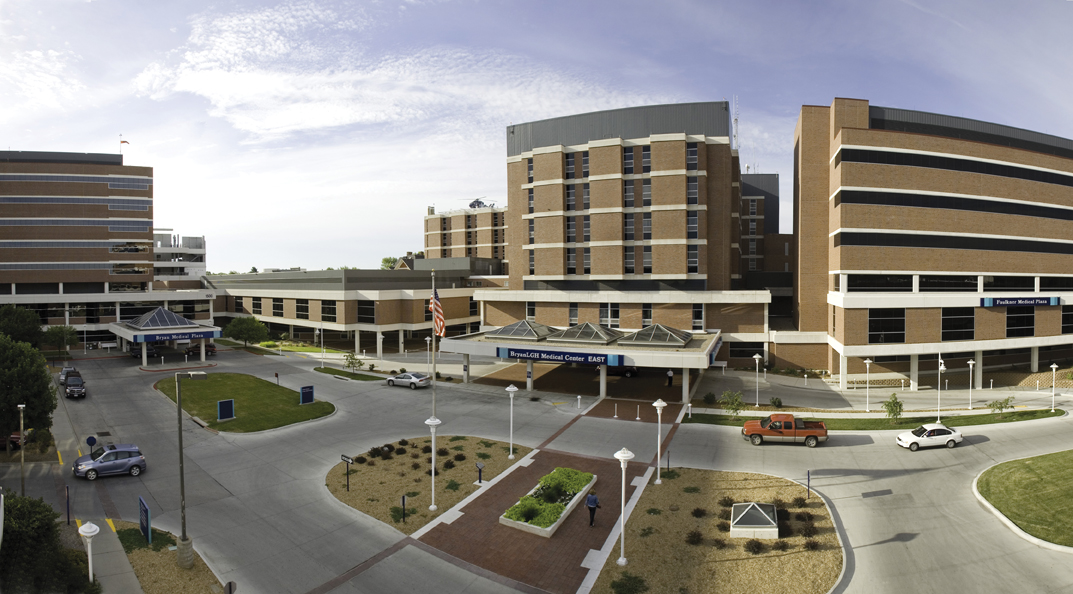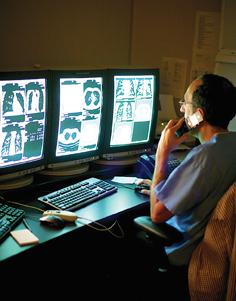
Bryan Medical Center includes two hospitals and two outpatient imaging centers.
The processes within a radiology practice are numerous and complex, and many of them can require extended periods of time. There is the time that is needed to wait for imaging orders — more time if written orders are illegible and require additional correspondence between the referring physician and radiologist. Time is also lost waiting for films and cassettes to be received and uploaded to the picture archive and communications system (PACS), and still more time is needed for second opinions if required. Collectively, the time that these individual processes take often leads to longer turnaround time, which can result in patient anxiety, medical error and increased medical costs.
Due to these reasons and the implementation of Stage 2 meaningful use (MU) criteria, which bases medical reimbursements on the efficiency and accuracy of care, imaging centers around the country are looking to find ways to cut time, and increase the accuracy and standard of medial care.
Wireless DR
In order to help imaging centers comply with the efficiency requirements that Stage 2 MU presents, manufacturers have developed equipment to streamline imaging. One technology that has made a big difference is the wireless X-ray system, which allows faster image access. With wireless imaging systems, radiology technicians are also able to move detectors between different rooms and systems. Manufacturers including Carestream and GE offer wireless solutions for their digital radiography (DR) X-ray systems.
Bryan Medical Center in Lincoln, Neb., has been able to regain significant time by installing wireless DR systems. Within its two hospitals and two outpatient imaging centers, the center conducts a total of 73,000 X-ray exams and 155,000 radiology exams, according to Sharon Harms, director of radiology. The center used computed radiography (CR) systems in 2011; however, staff discovered they could save time by replacing CR systems with wireless DR systems. According to Harms, “Today 90 percent of X-ray exams are conducted using DR systems that offer image access on the console in about five seconds and immediate transmission to the PACS for reading by radiologists and access by physicians.”
Employing wireless Carestream DR systems has also helped the Bryan Medical Center boost staff productivity because it no longer needed to transport or process CR cassettes. The wireless DR systems are one part of the solution that has helped the medical center reduce average report turnaround time from almost 24 hours to less than 45 minutes.
Unified PACS Systems
Other areas within radiology practices that can exhaust time include second opinions, consultations and multiple interpretations. The correspondence needed for these processes often prevents radiologists from getting reports back to physicians. In radiology practices that have multiple radiologists, cover wide service areas and perform imaging for several different facilities, if a radiologist has to send out a report to a colleague for consultation, depending on schedules and the business, turnaround time for that exam can nearly double. One simple way to streamline this is to utilize a unified PACS system that allows radiologists and other medical professionals universal access to images despite location.
This was the approach that was used in the southern division of Pueblo Radiology Associates in California. “We have one PACS system across all of our enterprise and we can work across the network. So, I happen to be sitting in Santa Barbara today and I can either primarily read, I can consult or I can ask others to consult on my cases regardless of where I’m sitting,” said Lawrence Harter, M.D., FACR, president of Pueblo Radiology Associates Inc. The company deployed a unified PACS system across six hospitals and seven outpatient imaging facilities to become as efficient as possible.
Having a unified PACS allows practices to more effectively utilize their existing workforce during times when certain offices are less busy. Because everyone has access to work lists and patient images, Harter said that radiologists who are less busy can get on the work list and help to interpret exams. “What that’s allowed us to do is to manage our manpower a little bit better. So for instance the facility I’m in now really requires four radiologists a day to do the work, but we only staff it with three because we’ve got people who are off-site at less busy places helping us with our workflow. It saves us the expense of having to add another radiologist.”
A universal PACS also limits delays between second opinions and other processes that require radiologists to either send or receive images from colleagues before an interpretation is made. “If someone has had an examination in another facility that we don’t operate in, we can still see it for direct comparison, so we don’t have delays in trying to get old films,” said Harter. And with the universal PACS, this can happen within a matter of seconds.
Viewing and Storing Physician Orders
For many imaging centers, the process of receiving imaging orders from referring physicians has sometimes proven to be unnecessarily time-consuming. Patients with imaging orders that are illegible require additional time for radiology technicians to contact the referring physician and get the correct order. To fix this seemingly simple issue, imaging centers have begun to employ databases that allow referring physicians to request orders electronically. These computerized physician order entry (CPOE) orders can then link to patient electronic health records, and radiology technicians can also view these electronic orders (EHRS), making verification of exams quick and easy.
“When a physician orders an outpatient exam through our scheduling center, the order is electronically linked to the patient appointment in the scheduling system at the Bryan Medical Center,” explained Harms. When a patient comes to radiology, staff can quickly verify that the order is correct by viewing the appointment, which automatically links to the imaging order in the computer. Because all staff members have computers in their work areas, they can view changes and add-ons to the schedule immediately.
The Bryan Medical Center can attest to the increased efficiency that switching from paper- to electronic-based physician orders has brought. “Previously, paper copies of orders were faxed to our departments and had to be distributed to various modalities,” Harms said. “If a paper copy was missing, this resulted in phone calls to track it down. Now the electronic orders are reliable and quick to use.”
Identifying Bottlenecks
Although many centers want to make changes to comply with Stage 2 MU criteria, an in-depth review of processes already in place is necessary before radiology practices can make changes to increase workflow efficiency. For some practices, identifying the areas where radiologists and technicians can become more efficient will happen over time and solutions will be created and implemented organically as a response. This was the case for Pueblo Radiology Associates. “It grew slowly. It started with the PACS system at one facility,” recalled Harter. “As each hospital and imaging center added on, we felt that having a unified system was better for patient care and staff understanding. It allowed more ease of use, and there was uniformity for training.”
For other practices, this internal analysis will require a more proactive approach. Harms says that annually the Bryan Medical Center administration conducts and reviews in detail a Press Ganey survey, which identifies physician satisfaction. The center also records productivity data from two sources — Truven ActionOI benchmarking and an internal productivity system that the finance department uses to track productivity. This information, which includes hours worked per procedure and/or hours worked per ambulatory procedure codes (APC)
relative weight, is collected on an ongoing basis and reviewed biweekly, Harms explained. The data from these sources — along with a departmental quality control committee, interdisciplinary lean teams and departmental management teams to review physician satisfaction data, staff productivity data, expense reports and other factors that highlight areas of inefficiency in radiology workflow — help the center identify areas of improvement and
implement lean processes early on.




 January 13, 2026
January 13, 2026 









